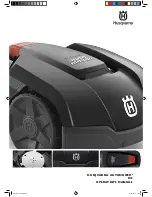
87
WASTE SYSTEM
The waste holding system in your trailer is made up
of sinks, shower, toilet plumbing drain and vent lines,
“gray water” holding tank, and “black water” holding
tank. The holding tanks make the system completely
self-contained and allow you to dispose of wastewa-
ter at your convenience. A flexible sewer hose is used
to connect the holding tank outlet to the inlet of an
approved wastewater dump station or sewer system.
The holding tanks are made of seamless plastic that
will not corrode. On most units with dual tanks, one
retains toilet waste and the other retains liquid waste
from the sinks and shower. Drain all wastes at an ap-
proved site.
FRESH WATER FLUSH TOILET
Your trailer is equipped with a marine-type recreation-
al vehicle toilet. This toilet is especially designed to
operate with a minimum of water usage.
The flushing mechanism, a hand-operated lever,
allows a valve in the bottom of the bowl to open,
permitting the contents to be flushed into the holding
tank below. A stream of water under pressure from
the trailer’s water system swirls around the bowl,
cleaning and flushing the contents. Most models
have two levers, each working independently of the
other so the bowl can be filled with water prior to use.
For additional information, please refer to the operat-
ing manual supplied with the toilet.
NOTE:
The toilet requires a water supply for proper
use. This can be from either a city water hookup, if
available, or from the on board fresh water tank sup-
ply. The 12-volt water pump switch must be in the
“ON” position when using water from the tank.
BLACK WATER HOLDING TANK
The holding tank must be primed with water and
one odor control chemical package at each initial
use. Add more odor control chemical if needed until
dumping is required. Refer to the chemical package
available at most RV outlets for specific instructions.
DUMPING THE HOLDING TANKS
The holding tanks terminate in a valve arrangement
that permits each tank to be dumped separately or
together. The valves are called “knife valves”. A blade
closes the opening in the sewer drain pipes. The
blade is connected to an extension handle that is
pulled to release the contents of the tank(s).
During self-containment use, the sewer outlet line
should be securely capped and valves closed to
prevent leakage of waste material on the ground or
pavement.
Holding tanks are enclosed sewer systems and as
such must be drained into an approved dump station.
Both black and gray water holding tanks must be
drained and thoroughly rinsed to prevent accumula-
tion of harmful or toxic materials.
Dump the holding tanks only when they are about
2/3 full. If necessary, fill the tanks with water to 2/3
full. This provides sufficient water to ensure complete
flushing of waste material into the sewer line.
Whenever possible, dump the holding tanks before
traveling.
The holding tanks outlet is set up to be used with
a removable fitting that locks onto the outlet with a
clockwise twist. The sewer drain hose is clamped on
this fitting when you need to drain the holding tanks.
When you are operating self-contained, or you store
the trailer, install the protective cap in place of the
removable hose.
The sewer (dump) hose is compressed and stored in
the trailer’s hose carrier.
Summary of Contents for 1130
Page 6: ...6 This page intentionally left blank ...
Page 8: ...8 This page intentionally left blank ...
Page 10: ...10 This page intentionally left blank ...
Page 12: ...12 This page intentionally left blank ...
Page 22: ...22 This page intentionally left blank ...
Page 28: ...28 This page intentionally left blank ...
Page 34: ...34 This page intentionally left blank ...
Page 48: ...48 This page intentionally left blank ...
Page 54: ...54 This page intentionally left blank ...
Page 60: ...60 This page intentionally left blank ...
Page 68: ...68 This page intentionally left blank ...
Page 76: ...76 This page intentionally left blank ...
Page 86: ...86 This page intentionally left blank ...
Page 89: ......
Page 94: ...94 This page intentionally left blank ...
Page 113: ...113 SCHEMATICS ...
Page 120: ...120 ...
Page 121: ...121 ...
Page 123: ...123 ...
Page 131: ...131 ...
Page 132: ...132 ...
















































